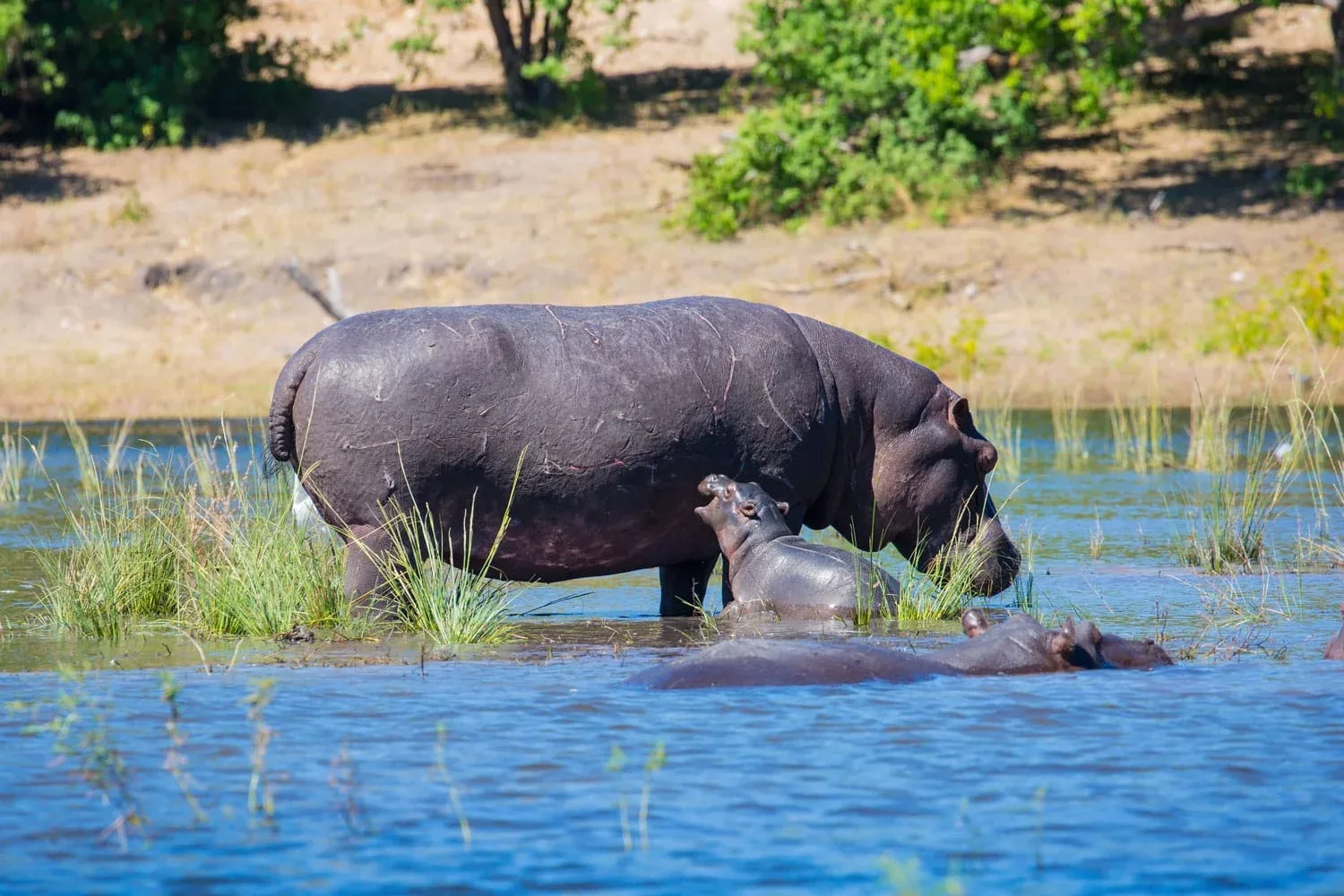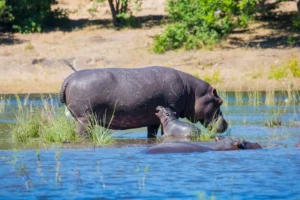Discover the top destinations in Tanzania with Exodus Safaris to the best places to visit in Tanzania this year to next year (2024-2025). From the Serengeti’s wildlife spectacle to Zanzibar’s cultural charm, explore Tanzania’s diverse attractions.
Tanzania, a jewel of East Africa, beckons travelers with its rich tapestry of natural wonders, cultural diversity, and vibrant heritage. From the iconic plains of the Serengeti to the majestic heights of Mount Kilimanjaro, this diverse nation offers an unparalleled tapestry of experiences for adventurers and cultural enthusiasts alike. Whether you seek the thrill of a safari amidst the Big Five, the allure of Zanzibar’s spice-scented shores, or the ancient mysteries of Stone Town, Tanzania promises to captivate with its blend of untouched landscapes and warm hospitality. Join us on a journey through the best places to visit in Tanzania, where every corner reveals a new chapter in Africa’s enchanting story..
Zanzibar Island

Zanzibar, a tropical archipelago off the coast of Tanzania, is a mesmerizing destination that blends rich history, vibrant culture, and stunning natural beauty. Known as the “Spice Island,” Zanzibar entices visitors with its exotic spices, pristine beaches, and UNESCO-listed Stone Town, a labyrinth of narrow streets and historic buildings.
Tourists flock to Zanzibar for its idyllic white sandy beaches lapped by turquoise waters, perfect for sunbathing, snorkeling, and diving. The coral reefs surrounding the islands teem with marine life, offering unforgettable underwater adventures.
Cultural experiences abound in Zanzibar, where Arabic, Indian, African, and European influences have shaped its unique identity. Visitors can explore spice plantations, where cloves, cinnamon, vanilla, and more are cultivated, or wander through bustling markets filled with local crafts and aromatic spices.
Stone Town, the historic heart of Zanzibar City, showcases a blend of Swahili, Arab, Persian, Indian, and European architectural styles. Its narrow streets lead to ancient mosques, ornate palaces, and lively bazaars, providing a glimpse into the island’s storied past.
For those seeking tranquility, Zanzibar’s smaller islands like Mnemba and Chumbe offer secluded retreats surrounded by pristine nature and abundant wildlife. Here, eco-lodges and resorts provide sustainable accommodations amidst unspoiled landscapes.
Overall, Zanzibar captivates visitors with its enchanting mix of history, culture, and natural beauty, making it a top destination for travelers seeking a truly immersive and unforgettable experience in East Africa..
Serengeti National Park

The Serengeti National Park stands as Tanzania’s crown jewel of wildlife conservation and adventure, drawing travelers from around the globe to witness its unparalleled natural spectacle. Situated in the sprawling expanse of northwestern Tanzania, bordering Kenya, the Serengeti spans vast savannahs and acacia-dotted landscapes that teem with iconic African wildlife.
Renowned for its annual Great Migration, where millions of wildebeest, zebras, and gazelles traverse the plains in search of fresh grasslands, the Serengeti offers a front-row seat to one of nature’s most awe-inspiring events. Visitors can witness predators such as lions, leopards, and cheetahs in pursuit of their prey, showcasing the raw and untamed beauty of the African wilderness.
Beyond its wildlife, the Serengeti captivates with its sweeping vistas and dramatic sunsets that paint the sky in hues of gold and crimson, creating a photographer’s paradise. Accommodation options range from luxury lodges perched on the edge of the plains to intimate tented camps that offer an authentic safari experience under the stars.
For those seeking adventure and a profound connection with nature, a visit to the Serengeti National Park promises not only unforgettable encounters with wildlife but also moments of reflection and wonder amidst one of Africa’s last true wilderness areas. Whether it’s your first safari or a return to this iconic landscape, the Serengeti guarantees a unique and awe-inspiring experience that will leave a lasting impression on all who visit.
Ngorongoro Crater

The Ngorongoro Crater stands as a geological marvel and a sanctuary for diverse wildlife, making it a must-visit destination in Tanzania. This UNESCO World Heritage Site is the result of a volcanic eruption that occurred approximately two million years ago, leaving behind a massive caldera that spans over 260 square kilometers.
Today, the Ngorongoro Crater is renowned for its unparalleled concentration of wildlife, offering a unique opportunity to witness the “Big Five” – elephants, rhinos, buffaloes, lions, and leopards – in their natural habitat. Zebras, wildebeests, hyenas, and numerous bird species also thrive within this ecosystem, creating a rich tapestry of biodiversity against the backdrop of the crater’s rugged terrain.
The crater’s unique ecological conditions support a variety of plant life, including 14 different species of trees and plants that have adapted to survive in the arid environment without much water or soil. This adaptation makes the Ngorongoro Crater an ideal destination for visitors seeking an authentic safari experience without venturing far from major cities like Arusha or Mwanza.
For travelers, the Ngorongoro Crater offers not only unparalleled wildlife viewing opportunities but also stunning panoramas that stretch across the crater floor, rimmed by steep walls that harbor lush greenery and hidden water sources. Whether exploring on guided safaris, enjoying picnic lunches with breathtaking views, or marveling at the sunset over the crater’s edge, a visit to the Ngorongoro Crater promises an unforgettable journey into the heart of Tanzania’s natural wonders.
Tarangire National Park
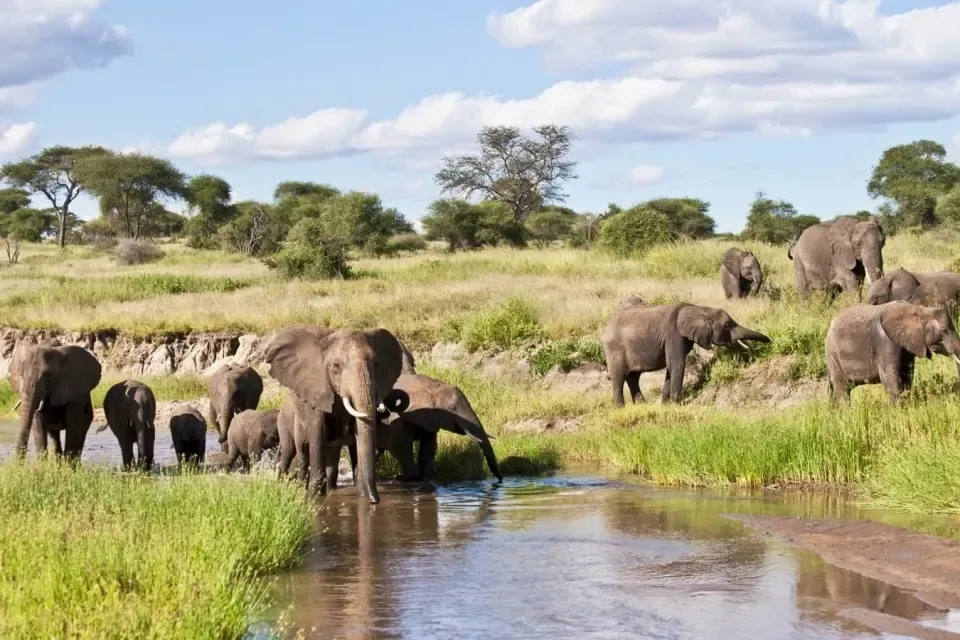
Tarangire National Park stands out as a haven for wildlife enthusiasts in Tanzania, renowned for its diverse array of animal species and unique landscapes. Located in the southern part of the country near Lake Natron, the park derives its name from the Tarangire River, which flows through it and supports a rich ecosystem.
Visitors to Tarangire National Park can expect thrilling encounters with iconic African wildlife such as elephants, giraffes, lions, leopards, and countless bird species. The park’s varied habitats, from expansive savannahs to dense woodlands and riverine forests, provide ideal conditions for these animals to thrive year-round.
One of Tarangire’s distinctive features is its stunning scenery characterized by ancient baobab trees dotting the landscape and the unique yellow-green hue of Lake Natron nearby. This combination of natural beauty and wildlife abundance makes Tarangire a photographer’s paradise and a captivating destination for safari enthusiasts.
Beyond its wildlife and landscapes, Tarangire National Park boasts a rich geological history. Fossilized remains and ancient cliffs serve as reminders of a time millions of years ago when dinosaurs roamed this region, leaving behind a legacy preserved in the park’s rocks and formations.
Whether exploring on foot during guided bush walks or embarking on game drives through the park’s vast expanse, visitors to Tarangire National Park are treated to an immersive safari experience that showcases the best of Tanzania’s natural wonders and wildlife diversity.
Lake Manyara National Park

Lake Manyara National Park, nestled at the base of the Great Rift Valley escarpment, offers a captivating blend of scenic beauty and diverse wildlife, making it a must-visit destination in Tanzania. This compact park is easily accessible by car, making it convenient for travelers exploring northern Tanzania’s safari circuit.
Renowned for its picturesque landscapes and abundant wildlife, Lake Manyara National Park is home to a variety of animal species, including the iconic tree-climbing lions, elephants, buffaloes, and hippos. The park’s rich biodiversity extends to over 400 bird species, making it a paradise for bird watchers. From vibrant flamingos to majestic birds of prey, Lake Manyara offers unparalleled opportunities to observe and photograph a wide array of avian life.
In addition to its wildlife, Lake Manyara National Park boasts diverse habitats that range from the serene shores of Lake Manyara itself to dense forests and open grasslands. This variety of ecosystems supports a thriving ecosystem where animals roam freely amidst scenic backdrops.
For outdoor enthusiasts, the park offers excellent hiking opportunities, allowing visitors to explore its trails and witness the natural beauty up close. Guided walks provide insights into the park’s flora and fauna, enhancing the overall safari experience with intimate encounters and educational moments.
Whether embarking on game drives through the park’s diverse landscapes or enjoying a leisurely picnic overlooking the lake, Lake Manyara National Park promises an enriching safari adventure filled with wildlife encounters and natural beauty that will leave a lasting impression on every visitor.
Mikumi National Park
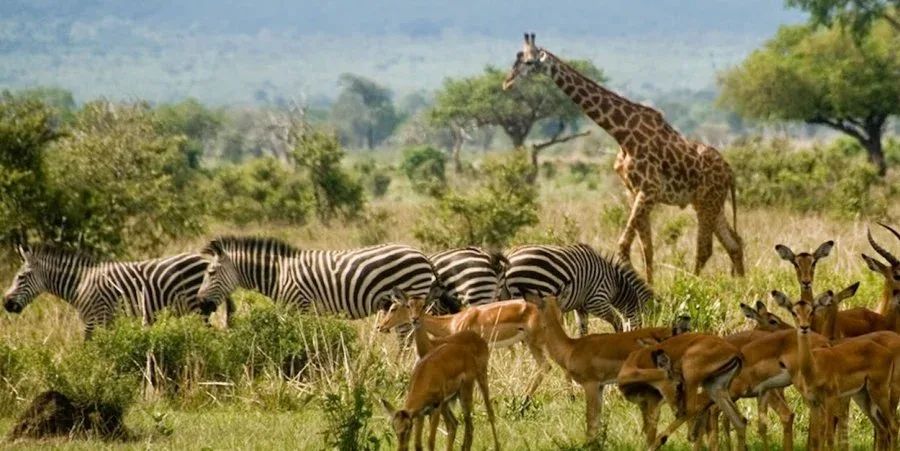
Mikumi National Park, situated in southern Tanzania near the Zambian border, is a hidden gem for wildlife enthusiasts seeking a diverse safari experience. Spanning over 3,230 square kilometers, the park is renowned for its rich biodiversity and stunning landscapes, ranging from dry savannas to forested areas and grasslands.
Visitors to Mikumi National Park can expect thrilling wildlife encounters, with opportunities to spot iconic African species such as elephants, lions, and rhinos. The park’s varied habitats provide ideal conditions for these animals to thrive, offering visitors a chance to observe them in their natural environment.
One of Mikumi’s highlights is its role in the wildebeest migration, a spectacular natural phenomenon where thousands of these majestic creatures traverse the park’s plains in search of greener pastures. This migration provides a mesmerizing spectacle and a prime opportunity for wildlife enthusiasts and photographers alike.
In addition to its wildlife, Mikumi National Park is a haven for bird watchers, boasting over 400 bird species. From colorful bee-eaters to majestic raptors, the park’s diverse avian population ensures an immersive experience in ornithology against the backdrop of Tanzania’s stunning landscapes.
For those seeking a deeper connection with nature, Mikumi offers guided game drives and walking safaris, allowing visitors to explore the park’s hidden corners and witness wildlife behaviors up close. Whether marveling at elephants grazing with their young or capturing the beauty of the African savanna at sunset, Mikumi National Park promises an unforgettable safari adventure in the heart of southern Tanzania.
Kitulo Plateau National Park

Kitulo Plateau National Park, nestled in Tanzania’s Southern Highlands, offers a unique blend of natural beauty and biodiversity that has earned it recognition as a UNESCO World Heritage Site. Spanning 1,000 square kilometers, the park is renowned for its stunning landscapes, diverse flora, and rare wildlife.
Visitors to Kitulo Plateau National Park can immerse themselves in a pristine wilderness characterized by rolling grasslands, wildflowers in vibrant hues, and expansive mountain vistas. The park’s diverse habitats support an array of wildlife, including elephants, leopards, and lions, providing ample opportunities for wildlife enthusiasts to observe these majestic creatures in their natural habitat.
One of the park’s highlights is its unique species, such as the Ruaha red colobus monkeys, which are found exclusively in Tanzania and add to the park’s ecological significance. These monkeys, along with other endemic species, contribute to Kitulo’s status as a biodiversity hotspot in East Africa.
For those seeking a deeper wildlife experience, Kitulo Plateau National Park offers the chance to encounter mountain gorillas. While sightings are rare and require luck and patience, these incredible primates can sometimes be observed during their daily treks through the forest canopy or glimpsed at night as they forage for food, often accompanied by playful young chimpanzees.
Beyond its wildlife, Kitulo Plateau National Park appeals to hikers and nature enthusiasts with its network of trails that wind through diverse ecosystems. Whether exploring on foot or capturing the park’s natural beauty through photography, visitors can enjoy a serene retreat amidst Tanzania’s Southern Highlands, where every turn reveals a new wonder waiting to be discovered.
Kondoa Rock-Art Sites
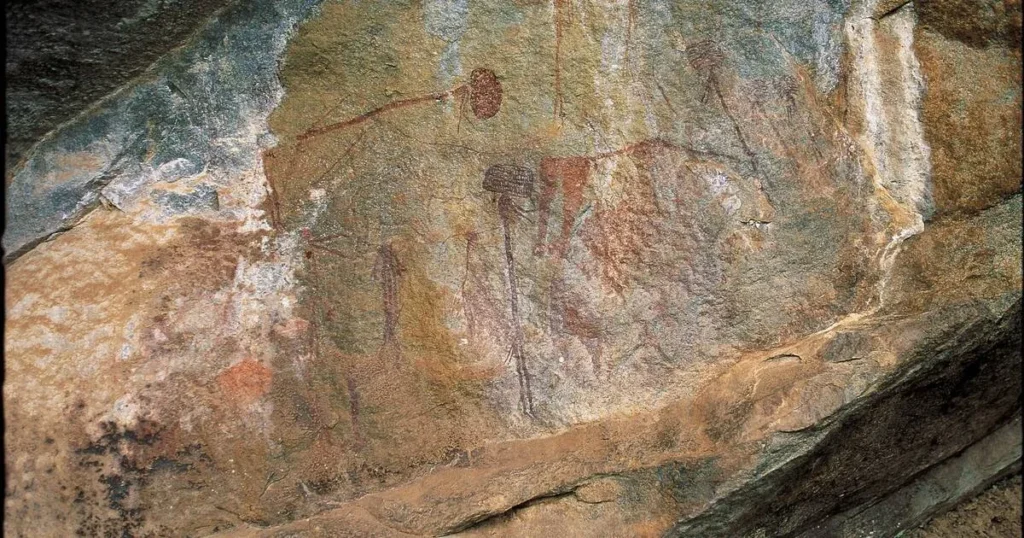
The Kondoa Rock-Art Sites in central Tanzania’s Dodoma Region are a captivating testament to ancient human creativity and cultural heritage. Located in the remote reaches of the Great Rift Valley, approximately 300 km south of Dar es Salaam, these sites offer a glimpse into a rich history spanning millennia.
The rock art found at Kondoa dates back as far as 3000 years, with artworks ranging from approximately 1000 BCE to 1500 CE. These intricate paintings and engravings depict scenes from daily life, ceremonial rituals, and spiritual beliefs of the region’s early inhabitants. The artworks are predominantly found in rock shelters and caves, which served as shelters and ceremonial spaces for ancient communities.
The significance of Kondoa Rock-Art Sites extends beyond their artistic value; they provide valuable insights into the cultural practices and traditions of Tanzania’s indigenous peoples. The artworks reflect the diversity of cultures that have inhabited the region over thousands of years, showcasing a blend of artistic styles and symbolic representations that are both fascinating and educational.
Visitors to the Kondoa Rock-Art Sites can explore several locations within the area, each offering a unique perspective on ancient African artistry and historical narrative. Guided tours are available to enhance the experience, providing context and interpretation of the artworks while ensuring their preservation for future generations.
For archaeologists, historians, and curious travelers alike, the Kondoa Rock-Art Sites offer a rare opportunity to connect with Tanzania’s ancient past and appreciate the enduring legacy of its early inhabitants through the medium of rock art.
Stone Town of Zanzibar

Stone Town of Zanzibar stands as a captivating blend of history, culture, and architectural splendor, making it a jewel of Tanzania’s tourism landscape. Designated as a UNESCO World Heritage site in 1982, Stone Town is revered globally as a “living museum” by Lonely Planet, offering visitors a glimpse into centuries of Swahili coastal culture and trade.
The city’s origins trace back to the 16th century when it flourished as a vital trading hub and the capital of the Sultanate of Zanzibar. Its strategic location on Unguja Island (formerly Zanzibar Island) in the Indian Ocean facilitated trade routes between Africa, the Middle East, and Asia, enriching Stone Town with a diverse tapestry of influences that are still palpable today.
A stroll through Stone Town reveals its distinctive architecture, characterized by pastel-colored houses crafted from coral stone and lime mortar, which lend a golden hue to the cityscape. These historic buildings are adorned with intricate carvings, often depicting motifs of animals, people, and geometric patterns that reflect the island’s cultural heritage and craftsmanship.
The bustling streets of Stone Town are alive with the sights, sounds, and aromas of daily life. Narrow alleyways lead to vibrant markets where locals sell fresh produce, spices, and handicrafts, offering visitors a sensory journey through Zanzibar’s culinary delights and artisanal traditions. From fish curry stew to refreshing green tea ice cream, the city’s culinary scene is as diverse and flavorful as its history.
Beyond its architecture and markets, Stone Town boasts cultural landmarks such as the Sultan’s Palace Museum, the Old Fort, and the House of Wonders, each offering insights into Zanzibar’s royal history, Swahili culture, and maritime heritage.
For travelers seeking an immersive experience in history and culture, Stone Town of Zanzibar promises an enchanting journey through time, where every corner reveals a story waiting to be discovered amidst its UNESCO-listed labyrinth of streets and seafront promenades.
Mount Kilimanjaro
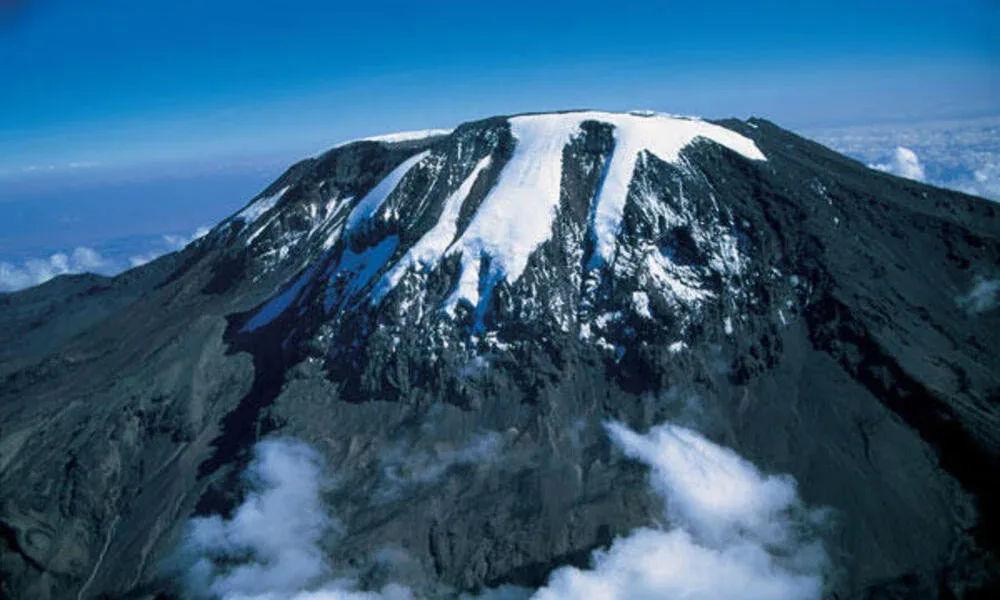
Mount Kilimanjaro, Africa’s tallest peak, is a majestic and iconic destination that beckons adventurers from around the world. Located in northern Tanzania, this dormant volcano rises impressively to 19,340 feet above sea level, dominating the landscape with its snow-capped summit.
The mountain’s geological history dates back approximately 600,000 years when it was formed during volcanic eruptions originating from Kibo Hill, a dormant volcanic cone at Kilimanjaro’s core. Today, Kilimanjaro is renowned not only for its height but also for its unique ecological zones, which range from lush rainforests at lower elevations to alpine deserts and glaciers near the summit.
Despite its high altitude, Mount Kilimanjaro experiences relatively low precipitation in the form of rain or snowfall each year. However, the mountain’s glaciers and permanent snowfields provide vital water sources that sustain diverse flora and fauna adapted to the harsh conditions. Unique plant species such as giant groundsels and distinctive animal species like the Kilimanjaro tree frog have adapted to survive in this high-altitude environment.
For visitors, climbing Mount Kilimanjaro offers a once-in-a-lifetime adventure, with several routes varying in difficulty and scenery. The most popular routes, including Machame, Marangu, and Lemosho, lead trekkers through breathtaking landscapes and diverse ecosystems, culminating in a sunrise summit that rewards climbers with panoramic views stretching across Tanzania and beyond.
Mount Kilimanjaro’s allure extends beyond its physical stature; it embodies a challenge, a symbol of natural beauty, and a testament to the resilience of life in extreme environments. Whether trekking to Uhuru Peak or simply marveling at its grandeur from afar, Mount Kilimanjaro promises an unforgettable experience that leaves an indelible mark on all who venture to its heights.
Conclusion
Tanzania is a fantastic place to visit with a rich and diverse culture, beautiful beaches, lush forests, and more. It’s also known for its history as one of Africa’s oldest kingdoms and has many UNESCO World Heritage Sites, such as the Serengeti National Park. While there are many exciting things to see in Tanzania from visiting safari parks like Tarangire National Park, some hidden gems might surprise even seasoned travelers like Mount Kilimanjaro, another UNESCO World Heritage Site!

